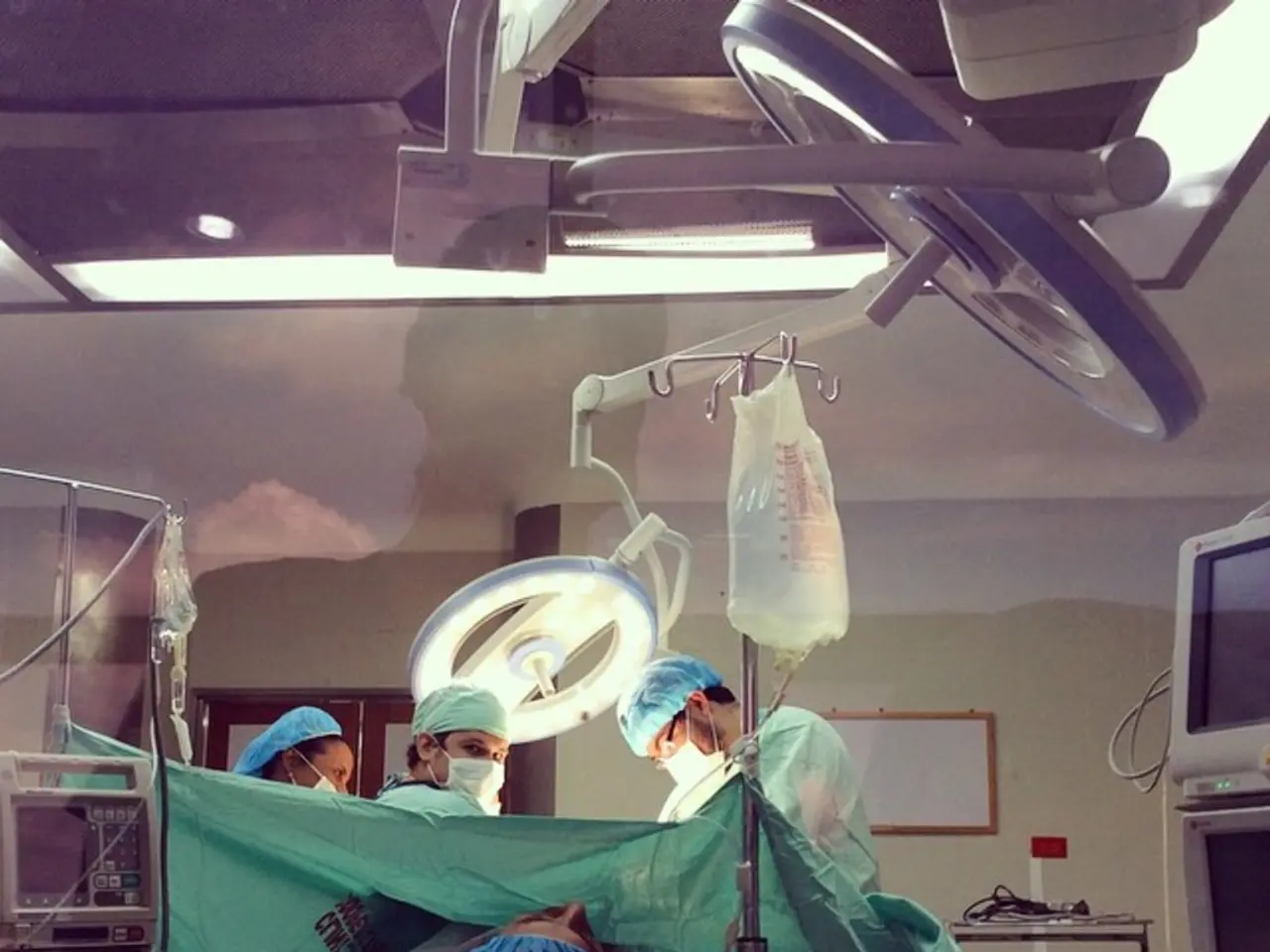Exploring the Present and Emerging Impact of Surgical Procedures Performed Through a Singular Access Point
In the world of robotic surgery, a new contender has emerged, promising to revolutionise minimally invasive procedures: the single-port (SP) robotic surgical system. Dr. Joseph, a prominent figure in the field, has been instrumental in championing this innovative technology.
The SP system, which made its debut in 2018, has become the preferred mode of intervention for certain procedures, such as simple prostatectomies, using the transvesical route. This system offers potential benefits for patients, including reduced scarring, less pain, less need for narcotics, quicker discharge, and faster recovery.
One of the key advantages of the SP system is its use of a single small incision, which can reduce post-operative discomfort and potentially eliminate visible scars. This is particularly beneficial for patients who have had previous abdominal surgeries or have extensive scar tissue.
However, the SP system is newer and more specialized, and the learning curve can be steeper. In contrast, multi-port robotic systems like the da Vinci Xi are more widely established, with more surgeons trained. The multi-port systems involve multiple smaller incisions, which tend to heal faster and become less noticeable over time.
While single-port excels in cases requiring minimal incisions, multi-port is well-suited for a broad range of complex surgeries, supported by extensive clinical experience. Single-port systems are especially beneficial for patients with low BMI and small prostates, and for those contraindicated for multiple incisions.
For hospitals considering the adoption of single-port systems, several factors should be evaluated. These include surgeon expertise and training availability, patient population needs, complementarity with existing systems, cost and infrastructure, and evidence and outcomes data.
Studies are underway to understand the value SP delivers to patients and its impact on intraoperative and postoperative outcomes. Initial findings suggest that SP robotic surgery is associated with improvements in cosmetic outcomes, patient satisfaction, post-surgical pain, and recovery.
The smaller instruments in the SP system can make some operations more refined and precise, but they can also be trickier to grasp and hold compared to multi-port systems. The process of triangulating instruments in the SP system is different due to them branching out from a single trocar.
For high-volume surgical centers, the SP robotic system is worth considering due to its potential capabilities. Improvements in tools associated with the SP system, such as the recently developed access kit, aim to improve surgical outcomes. The access kit acts as an extension of the abdominal cavity, making it easier to assess cancer margins.
In summary, single-port robotic surgery offers patient-centered advantages in reduced invasiveness and better suitability for specific cases, but involves a steeper learning curve and limited current surgeon experience. Multi-port remains the versatile and established standard. Hospitals should balance clinical needs, surgeon training, and technology costs when considering adoption of single-port systems.
The SP robotic surgical system, introduced in 2018, has shown to be advantageous in handling procedures like simple prostatectomies, offerring benefits such as reduced scarring and faster recovery, often preferred for patients with previous abdominal surgeries or extensive scar tissue. Meanwhile, multi-port systems like the da Vinci Xi, with more surgeons trained, excel in a broader range of complex surgeries.
Studies on single-port robotic surgery suggest improvements in cosmetic outcomes, patient satisfaction, post-surgical pain, and recovery, due in part to the smaller instruments that can provide more refined precision. However, the learning curve for the SP system can be more challenging compared to the multi-port systems with multiple smaller incisions.




